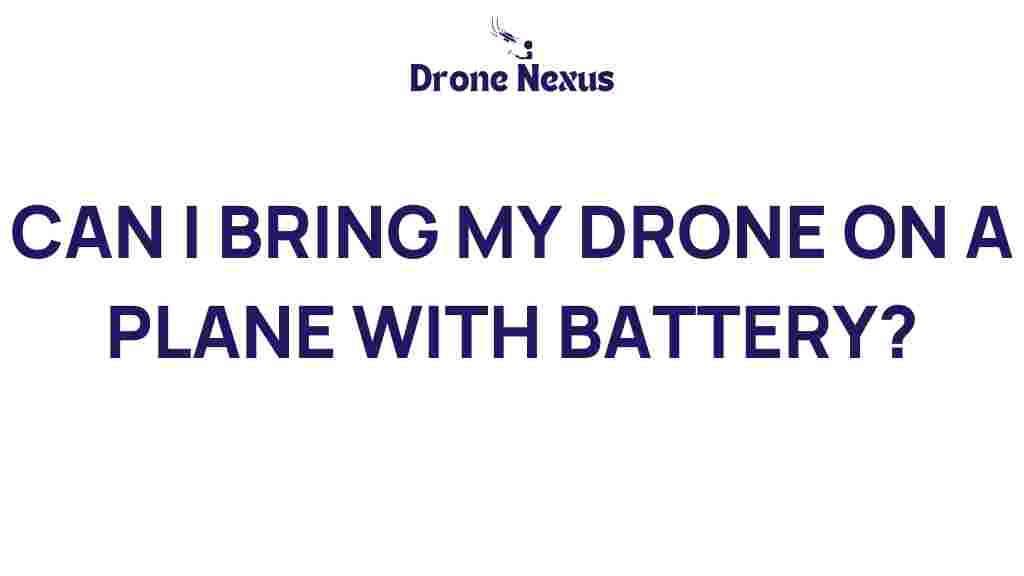Drone Travel: Can You Bring Your Drone and Battery on a Plane?
As the popularity of drones continues to soar, many enthusiasts are eager to capture stunning aerial footage while traveling. However, navigating the rules and regulations surrounding drone travel can be complex, especially when it comes to air travel. If you’re planning to take your drone on a plane, understanding the guidelines about carrying both your drone and its battery is crucial. In this article, we’ll explore everything you need to know to ensure a smooth journey with your drone.
Understanding Airline Regulations
Airlines have specific rules regarding the transportation of drones and their batteries. Here’s a general overview:
- Check with Your Airline: Before you pack your drone, it’s essential to check your airline’s policy. Each airline may have different regulations regarding drone travel.
- Size and Weight Limitations: Most airlines have restrictions on the size and weight of carry-on items. Ensure your drone fits within these limits.
- Battery Regulations: Lithium batteries, which are commonly used in drones, have specific guidelines. These may include watt-hour limits and requirements for how they must be packed.
Step-by-Step Process for Bringing Your Drone on a Plane
To simplify your experience when traveling with a drone, follow these steps:
1. Research Regulations
Start by researching the regulations of both your departure and arrival airports, as well as any layover locations. Knowing the rules can prevent complications.
2. Check TSA Guidelines
The Transportation Security Administration (TSA) has specific guidelines for traveling with drones. Visit the TSA website for the most current information.
3. Prepare Your Drone for Travel
Before packing your drone, remove any accessories such as propellers, cameras, or gimbals. This will help protect them during transport.
4. Pack Your Drone Properly
Use a sturdy case specifically designed for drones. Ensure that the drone and battery are well padded to prevent damage.
5. Battery Storage
As per regulations, lithium batteries should be carried in your carry-on luggage rather than checked baggage. Make sure:
- The batteries are under the watt-hour limit (typically 100 watt-hours for most airlines).
- Spare batteries are wrapped or placed in protective pouches to prevent short-circuiting.
6. Arrive Early
Arriving at the airport early will give you ample time to go through security checks without stress. Be prepared to explain that you are traveling with a drone.
Troubleshooting Tips for Drone Travel
Even with careful planning, issues can arise when traveling with a drone. Here are some troubleshooting tips:
- Security Checks: If your drone sets off alarms, be prepared for additional screening. Having documentation about your drone can help expedite the process.
- Battery Issues: If you’re unsure about your battery’s watt-hour rating, check the specifications on the battery label. If it exceeds the limit, you may need to purchase a compliant battery.
- International Travel: If traveling internationally, research the local laws regarding drone usage. Some countries have strict regulations, and failing to comply could result in fines or confiscation.
Conclusion
Traveling with a drone can be a rewarding experience, enabling you to capture breathtaking views and create unforgettable memories. However, understanding the rules surrounding drone travel is essential to avoid any complications. By following the steps outlined in this article and being aware of airline regulations, you can ensure that your drone and its battery are safely transported on your next flight. Remember to always stay informed about the latest regulations, whether you’re flying domestically or internationally, to make the most of your drone adventures.
For more information on drone regulations and tips for flying, check out our detailed guide on drone safety and best practices.
Safe travels and happy flying!
This article is in the category Safety and created by DroneNexus Team
